Norway was occupied throughout almost all of World War Two. Here's what happened in Bergen from 1940-1945.
Many people know the outline of what happened in Norway during World War Two. But when you dig a little deeper, there are a ton of fascinating stories.
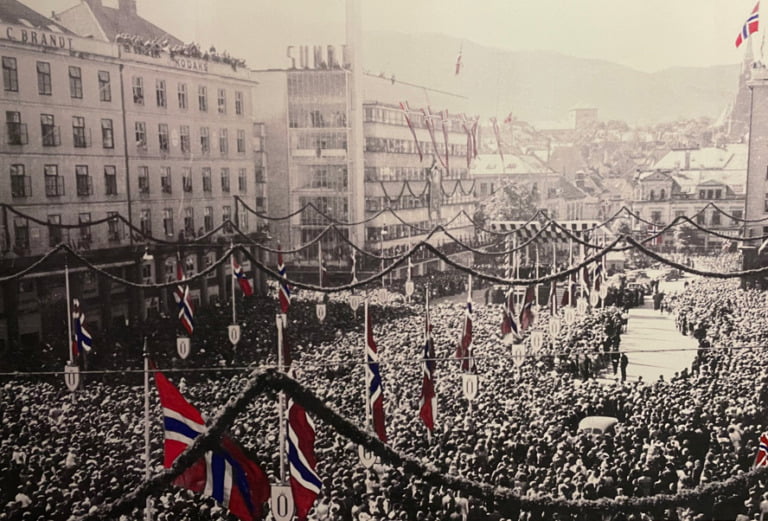
One way to do this is to look at the experiences of a specific place throughout the war. With its strategic coastal location and proximity to Britain, the history of Bergen is full of fascinating stories.
The initial attack on Bergen
On the morning of 9 April, 1940, German forces attacked several Norwegian cities simultaneously in the early days of World War II. German warships successfully attacked Bergen from the water.
Altogether, the attack claimed 24 lives, of which 16 were German soldiers. One German cruiser, Königsberg, was damaged and had to drop anchor, before being sunk by British aircraft the following day.
The city's new German rulers were initially nervous about British attacks, as other Norwegian cities such as Narvik were seen as more strategically important and thus received more support from Germany. This would turn out to be temporary.
The Norwegian Nazi Party in Bergen
Support for the Norwegian Nazi Party (NS) increased considerably after the Germans dissolved all other political parties in September 1940. However, support for NS was less strong in Bergen than in many other Norwegian cities.
This could be because of Bergen's strong historical seafaring links with Britain. Also, many city residents still remembered the destruction caused by German U-boats in World War I.
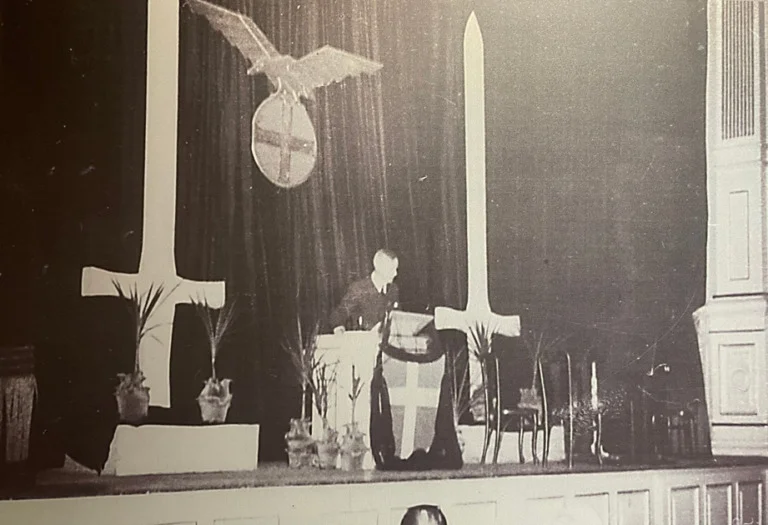
Nevertheless, the NS did enjoy support throughout the war years, in particular when the war was going well for the Germans. In his quest for a Nazi Norway, Vidkun Quisling ensured city councils were appointed by NS and all public sector workers were NS members or sympathisers. At least, in theory.
Demonstrations against NS rule
When Quisling's changes were introduced, Bergen's mayor Asbjørn Stensaker reluctantly decided to continue. Stensaker was one of the best-known people to oppose the occupation to remain in post until his eventual resignation in March 1942.
Just six months after the Nazi occupation began, Quisling was greeted with protests upon a visit to Bergen. Uniformed troops were dispatched to quell the demonstrators.
Read more: Norway Timeline
Protests were getting nowhere, which led to a more organised resistance in civilian society. Secrets messages were passed around to explain how to handle the efforts from Quisling. The resistance began to recruit members from workplaces, schools and social groups.
Prisoners and slaves
As their Bergen operation expanded, the German occupiers needed labour. Prisoners of war, mainly from the Soviet Union, were deployed in Bergen during the autumn of 1941. Work was inhumane, food barely edible.
Bergen did not escape the persecution of Jewish people. In October and November of 1942, a total of 20 Jews in Bergen were arrested and sent to Germany. None of them are believed to have survived.
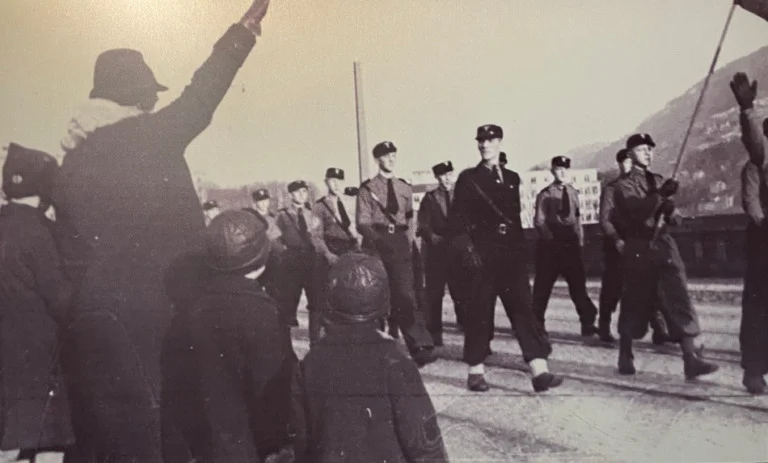
Early defeats for the resistance in Bergen
Resistance began early in Bergen, thanks in part to the links with Britain and the availability of North Sea transport on the Shetland Bus. However, the early years of resistance were tough as leaders had no training and struggled against experienced German groups.
The so-called Alvær group was a loosely structured resistance group. Members included teachers and students at the Bergen Merchant Marine School who built radio transmitters.
44 people were arrested in early 1941 after the Germans were tipped off by a Norwegian working for German military intelligence.
Headquartered in Bergen, the Stein organisation was also taken down by German officers shortly afterwards.
The Stein group included around 1,500 people all along the coastline working in intelligence, North Sea traffic, illegal newspapers, weapons training and radio transmission. More than 200 people were arrested in the autumn of 1941.
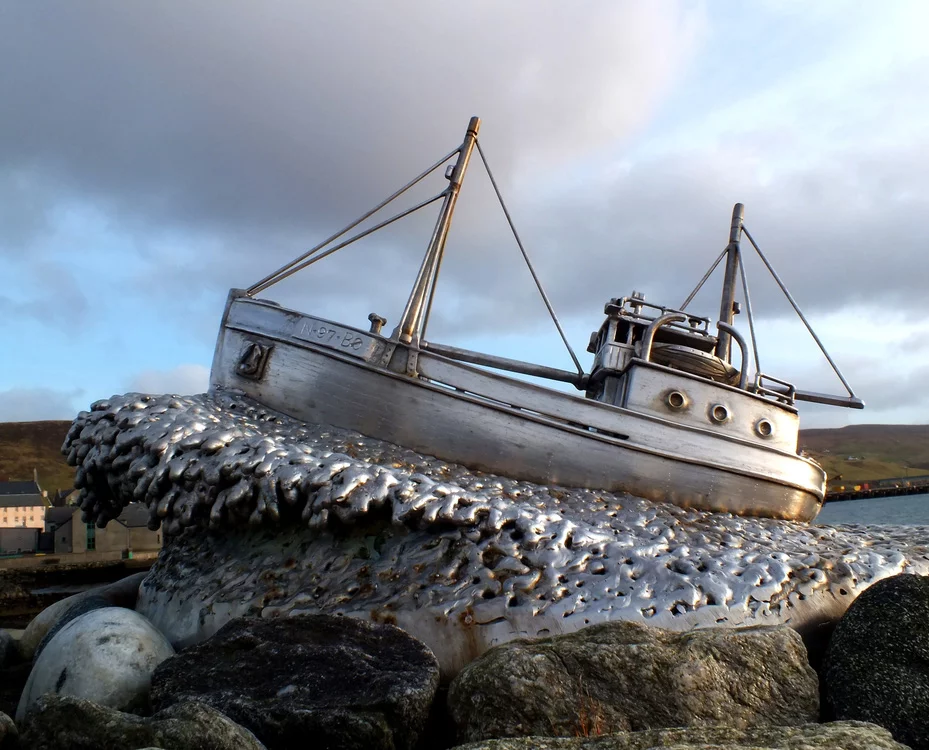
New intelligence agents were continuously recruited to replace those captured. Eventually, Bergen groups became attached to the XU nationwide organisation linked to Stockholm and London.
British secret service agents were also in contact with Bergen resistance members to gain operational information that could be used in the ongoing war.
The increasing importance of Bergen
Due to fears of an invasion of Norway by the British, Hitler began to expand military capability along the coastline, notably in Bergen. The defensive capabilities included both outer and inner artillery.
Outer artillery included heavy, long-range canons including Fjell Festning with a range of 42km. Inner artillery was mostly anti-aircraft canons.
Bergen became the most important support point for German U-boats operating in the North Sea aiming to prevent Allied convoys reaching Murmansk. During the war, 190 different U-boats were attached to the German 11th Submarine Fleet in Bergen for various amounts of time.
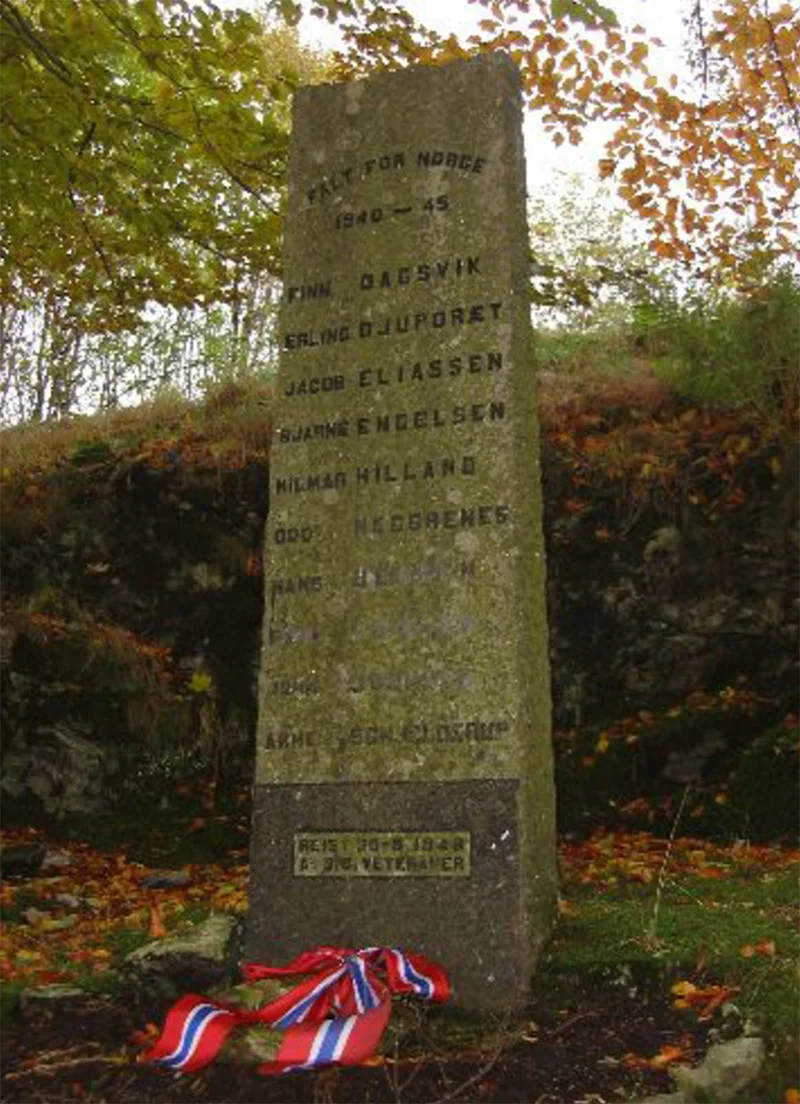
British help in Bergen
Norway's resistance was looking weak after several key arrests in 1943 and 1944. Outside support was needed, so British special unit (Special Operation Executive) SOE sent several specially trained Norwegian agents to the Bergen area.
Radio transmission stations were installed to send reports on German ship movements and lists of military capabilities to London. They were also used to make transport arrangements for agents, weapons and military equipment between Britain to Norway.
SOE agent Alf Martens Meyer arrived in Bergen, his hometown, as leader of Operation Moorhen. His mission was to establish radio contact with London and train future operators.
Read more: A Brief History of Norway
The operation didn't succeed, but Meyer eventually became SOE leader for western Norway. He played an important role in training agents.
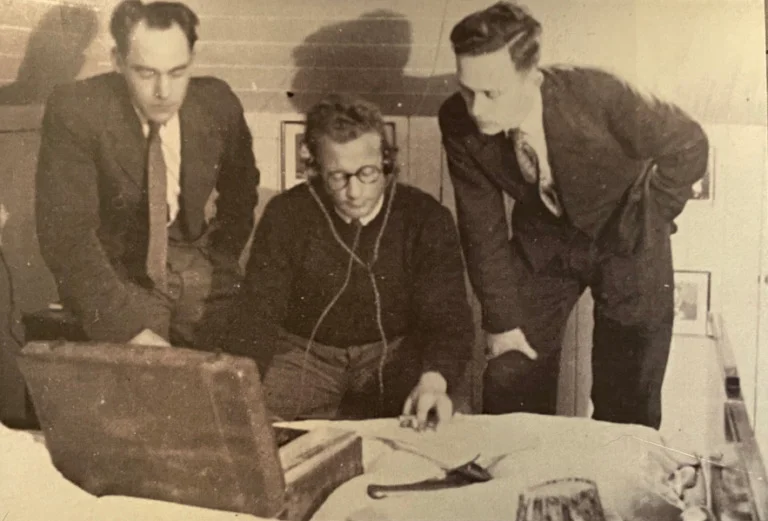
Communist resistance sabotage
A small anti-fascist sabotage group has been established in Bergen along with several other European countries. In 1943, a new group emerged following earlier difficulties. The new group cooperate with the British and Norwegian authorities.
In 1944, the group claimed up to 1,000 members, and published a few different “illegal” newspapers. The Gestapo began to put big efforts into disbanding the group, and eventually arrested around 100.
An accidental explosion
In the morning of 20 April, 1944, Bergen's residents were awoken by a deafening explosion.
More than 100 Norwegians were killed, with thousands more injured. 56 Germans were killed. Bergen itself was also hit hard. 248 buildings were destroyed, including many landmark buildings.
As the explosion occurred on Hitler's birthday, initial reports blamed sabotage. But in fact, the explosion was entirely accidental. A Dutch fishing vessel transporting explosives to Hammerfest was in port. Norwegians working abroad noticed a strong sulphur smell before managing to escape, just in time.
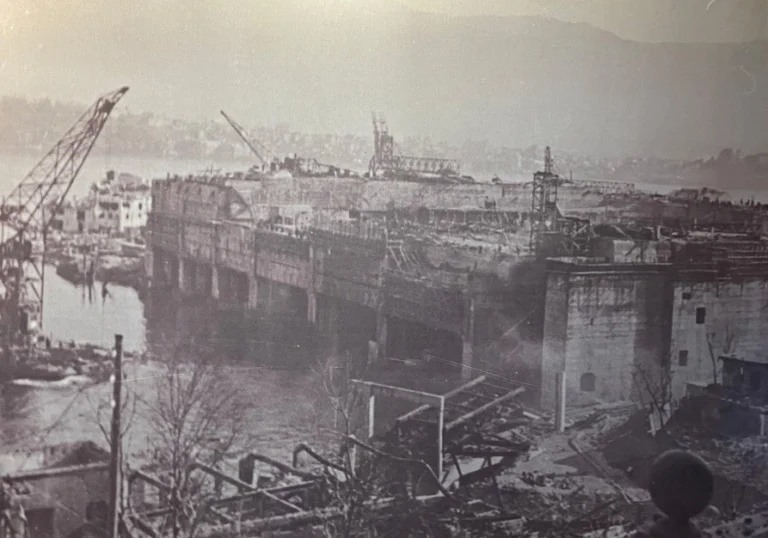
The U-boat base attack
In September 1944, British forces finally succeeded in taking out the floating dock used to service German U-boats. 17 workers were killed.
More attacks followed on U-boat infrastructure in and around Bergen. In October 1944, a total of 193 Norwegians died including many schoolchildren as the U-boat bunker and many surrounding buildings were destroyed. It remains the biggest single loss of life on a single day in Norway.
The Matre mountain base
In the winter of 1944/45, the Bjørn West resistance group established a base in the Matre mountains near Bergen. Many young people from the city used the base as a refuge to avoid being mobilised by German forces.
Today the site and several memorials are part of a popular hiking trail. One of the memorials is for Arne Lampe, one of the last people to lose their lives during World War II in Norway.
Liberation
German morale dropped during the final months of the war. As it became apparent the war was nearing its end, German security officers destroyed documents that could implicate them.
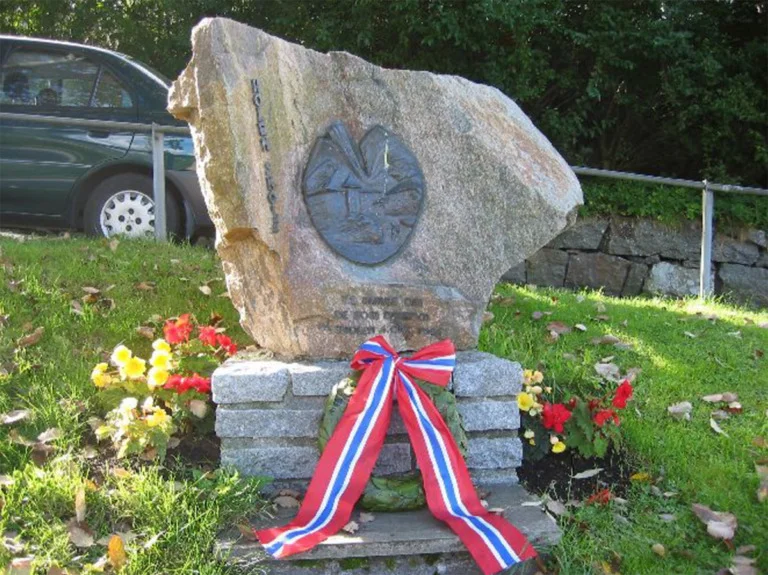
Many Norwegians began to openly listen to the BBC, and some even raised the Norwegian flag. On 6 May, thousands of Bergen citizens gathered downtown. The same thing happened the following day.
Read more: Norway's Liberation Day
During the afternoon, the announcement was made over loudspeakers: the war was over. Tens of thousands of Norwegians filled the streets to celebrate. Nazi propaganda was burned in the streets along with blackout curtains.
Following Liberation, many people suspected of war crimes were arrested. The exiled Norwegian government defined NS membership as treason. Some women were also interrogated over relationships with German men.


These are the history lessons that need to be taught today, not because it’s convenient, because it cannot be repeated again. What happened then should never happen again.
Unfortunatelly ll.World War is a dark pages of History of World humanity.But unfortunately dark pages is continues of World historys today.For me the reason of its not sufficiently work for Peace and together works eachother.l send all My peacefully wish to all of us whole of World.
I have just watched ‘The King’s Choice’ a Norwegian drama doc (with English subtitles) on BBC4 detailing the Norwegian royal family from the onset of war. I heartily recommend it.
A most interesting article on Bergen and WWII. It filled a lot of blanks I’ve had about what took place in the city of my family members that I didn’t know until a connection made in 2017.
I think Norway would be a great place to live. Unfortunately I am age
76 and live in the US which is now a nation of slackers and ignorant people. Mostly what I know about Norway comes from reading Karin
Fossum books. The food sounds great. If I ever make would get a shrimp sandwich. Best Wishes to all.
Robert
Interesting article. Much more to tell of course. The destruction of nearby Telavåg for example, after the deaths of 2 SS men. Also there were observation posts along the coast of Norway manned by both Norwegians and British Commandos, reporting shipping. Lots of local stories wherever you go in Norway. The dark story of the Krigsbarn should also be remembered.
My father in law lived through the invasion in Bergen and told me about it. Oddly enough he owned an island off the coast of Bergen and the Germans came out to the island to capture them!!!